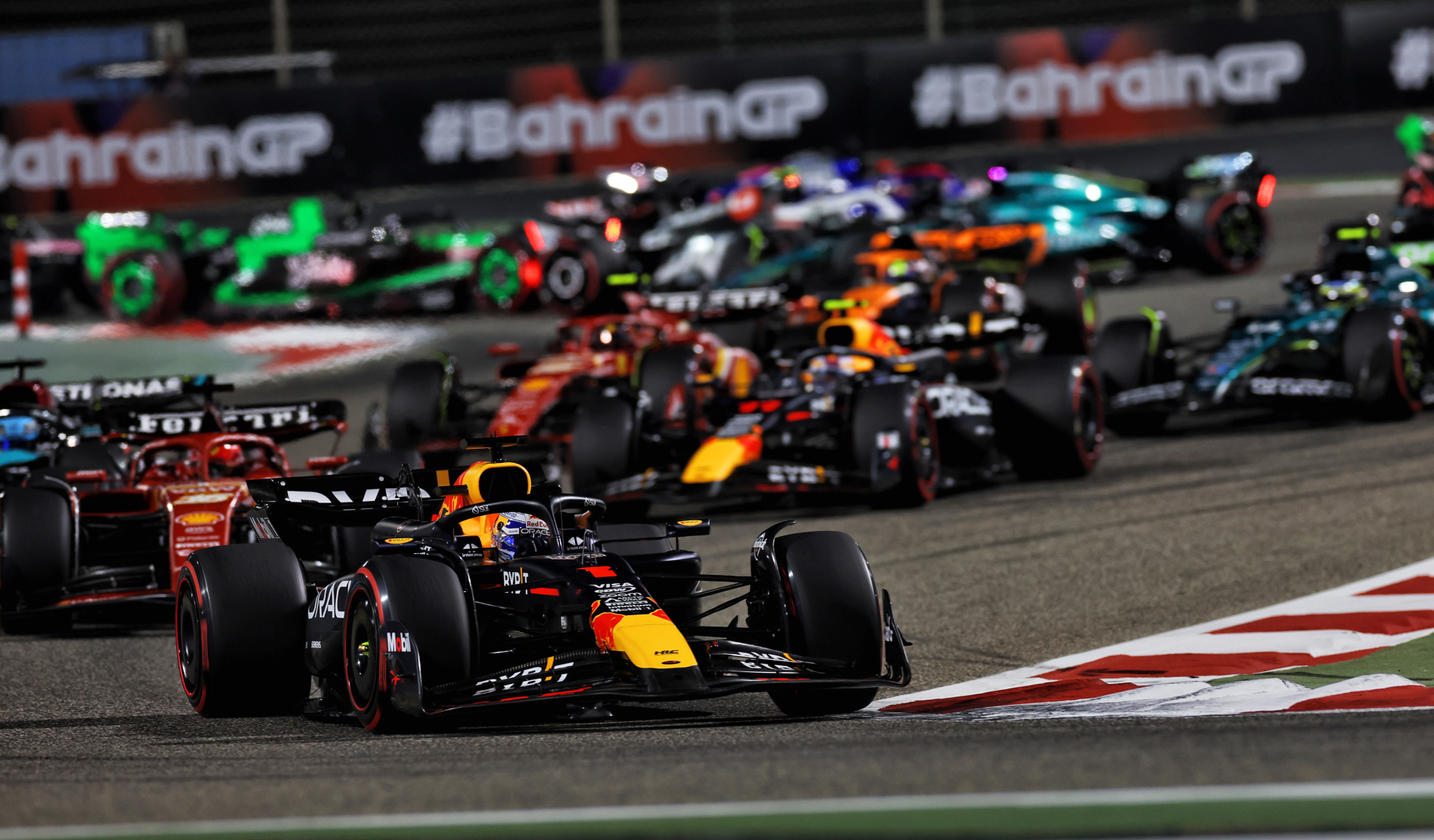Car
Formula 2 2024 season: Bahrain kicks off a new era
by Samarth Kanal
7min read
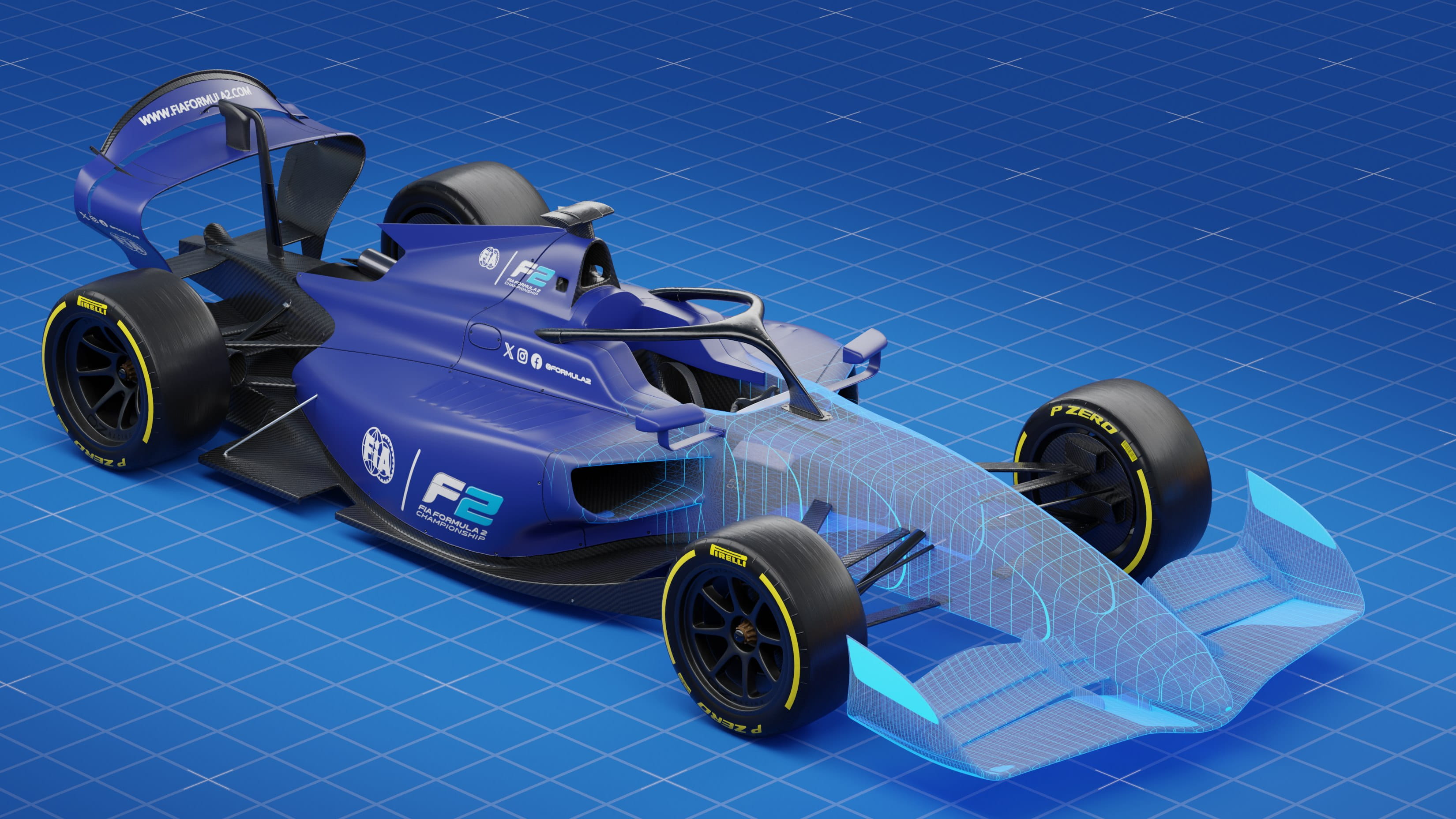
On immediate inspection, the brand-new Formula 2 car is clearly different from its predecessor. Yet the changes to F2 are far more extensive still than first appearances imply.
The rear wing
Part of the intrigue around the new car is centred around the rear wing, which features a curved element that opens up when DRS (the drag reduction system) is activated. The rear wing also has a smaller wake, allowing for closer racing, with the front wing also sculpted to aid following.
Speaking to RaceTeq, F2 CEO Bruno Michel called the design “spectacular” and said its objective was to make DRS “more efficient”.
Drivers noted that strong headwinds bolstered the DRS effect in Friday’s sprint race – with the following day’s feature race providing a more accurate picture.
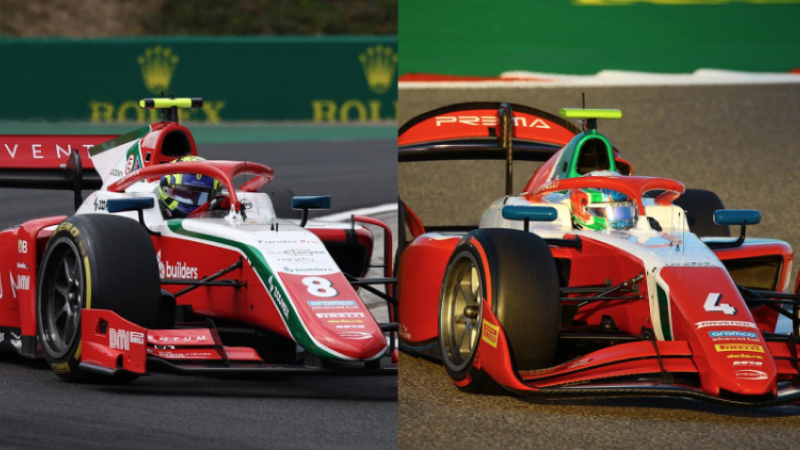
The last generation of F2 car (left) is markedly different from the new one (right)
Pepe Marti, who finished second in the feature race, said on Saturday: “It [the DRS] was a little bit worse today. There was close to zero headwind so it was not as effective on the main straight. But the DRS actually had quite a big effect; it was probably, combined with the tow, around four to five tenths [of a second faster].”
Michel admitted that the spec-series had reservations about including DRS back when it was known as GP2 in 2015, but said the system was ultimately implemented for a specific reason.
“Did it increase the level of racing, the level of performance, the show? I don’t know,” Michel asked himself. “But on the other hand, it really helps the drivers to be ready for the next step. That's why we have [implemented] it.”
A closer resemblance to Formula 1 is clearly one of F2’s ongoing aims and, within the paddock, there’s no general consensus on whether the new wing has made much of a difference – bar changing the aesthetics of the car.

McLaren’s Oscar Piastri graduated from F2 to F1 and made his F1 debut in 2023
Preparing the next generation
Despite a lack of rookies in the Formula 1 field for the first time since the world championship began, F2 is still [italics]the[italics] proving ground for those aspiring to make it to the top tier – which is why the feeder series must constantly evolve.
FIA single seater director Nikolas Tombazis explained that F2 has been brought “up to the same standard as Formula 1” with onboard fire extinguishers, stronger impact and rollover structures, and onboard electronics that satisfy the FIA’s F1 safety regulations. Despite the safety additions, Michel says the new car is actually three kilogrammes lighter than its predecessor.
But staying close to F1 poses its challenges, especially as this generation of F2 car is supposed to run until 2029.
“We used to have new cars every three years,” says Michel. “For economic reasons, it doesn't make much sense for the teams to buy new cars every three years. But on the other hand, we want to stay as close as possible to Formula 1. And Formula 1 is [evolving] so fast.”
That means F2 will probably evolve this car to improve safety and competition in the coming years to ensure it can continue its brief as a feeder series.
That doesn’t, however, mean that hybrid engines are on the cards. The Mecachrome V6 engine fulfils the cost and performance requirements of the series while a hybrid engine would require more people and more money to operate.
continues below
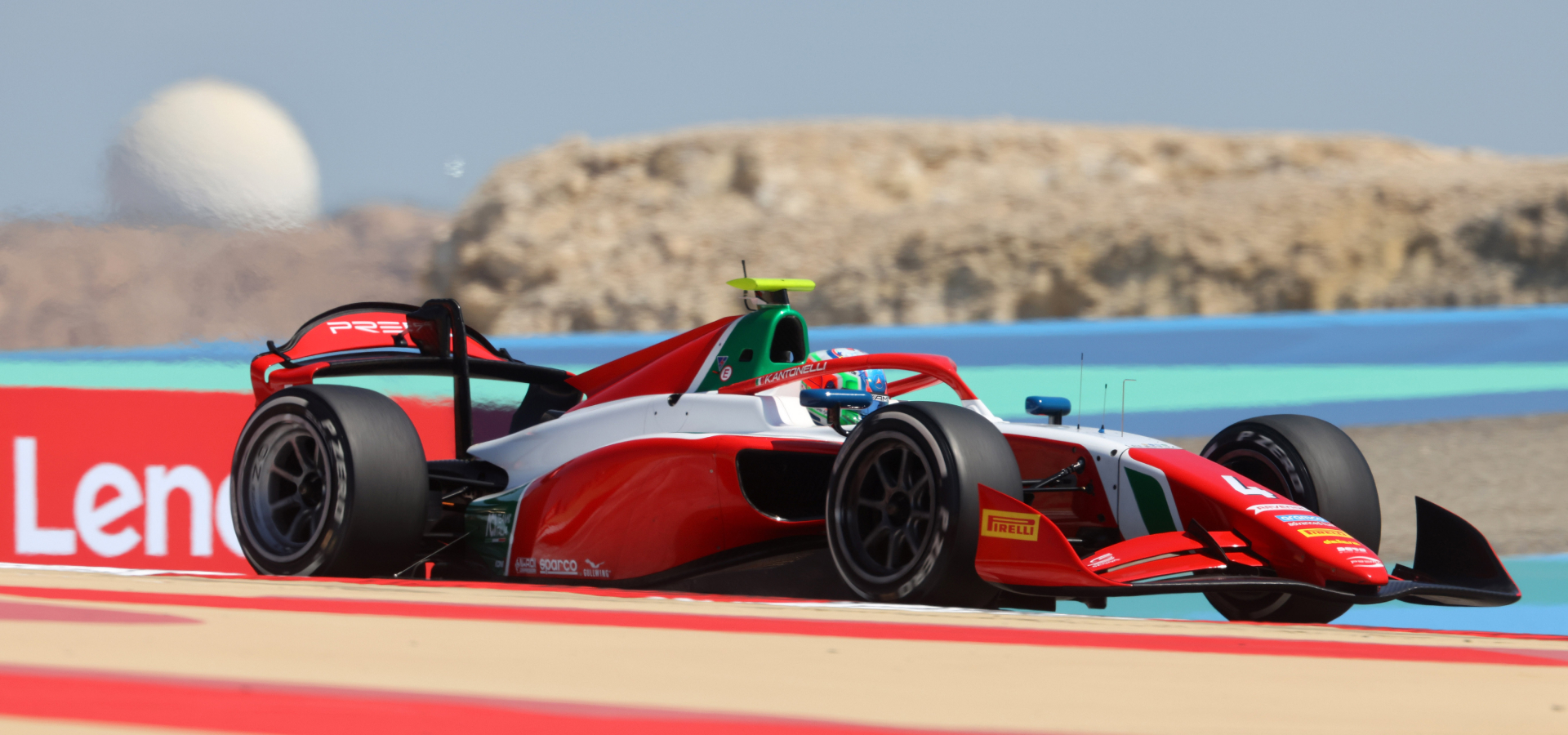
F2 cars are powered by a 3.4-litre turbocharged Mecachrome engine producing 620hp
Inclusivity at its heart
The F2 car’s cockpit has been changed to be more comfortable for drivers of different statures and body types. It specifically accommodates drivers measuring 1.5 metres tall to 1.98 metres tall, which is no mean feat given the car is 5.2 metres in length. Michel says inclusivity is priority “number one”.
He explains: “The funny thing is that over the last 20 years I've been in this business, the drivers are getting taller and taller. There was a point in time when they were all quite short; it's not at all the case anymore. And you see drivers last year, like Theo Pourchaire, like Jack Doohan, those guys are very tall, so you need to be able to accommodate them.
“Inclusivity is very important and we need to make sure that any driver, and I'm not speaking specifically for women, but any driver with any morphology can get into this car and feel comfortable with it, not only feel comfortable in the cockpit… but also that the steering effort is possible for everybody.
“And that's why we used Tatiana Calderon to do part of the development of the car. And she will do that [testing] for the [new] F3 car as well, because she's been driving all our cars, and I know very, very well how she is and how she works. And Tatiana was over the moon saying, ‘My God, that's a big difference with what you've done in the past’, and that's something that we really want to achieve.”
On Saturday in Bahrain, the top three F2 drivers implied that this approach has worked. Specifically Marti, who is 187cm tall, and winner Zane Maloney, who is 162cm tall, commented on how comfortable they felt driving the new cars despite their different heights.
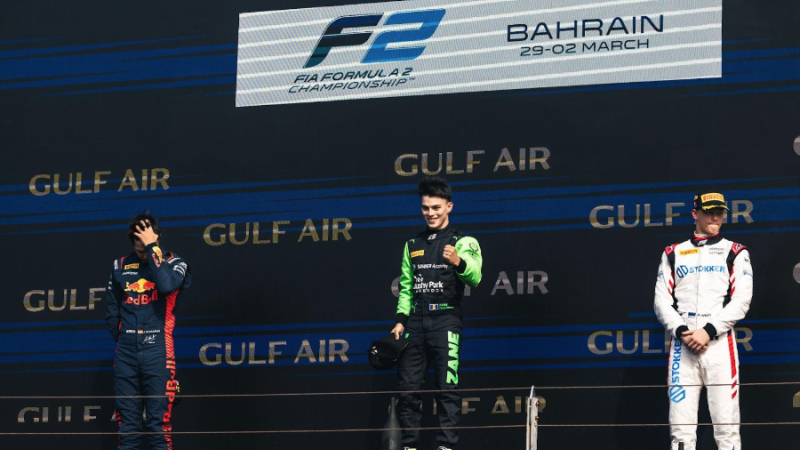
Drivers of different heights including Zane Maloney (centre) and Paul Aron (right) have commented on the comfort of the new F2 car
A lower-carbon future
In the same vein as F1, F2 is improving its sustainability efforts for the future. Fifty-five percent of the fuel in the current F2 car is biofuel, and that proportion is set to ramp up - with the championship set to use 100% Aramco synthetic fuel in 2027, along with F3.
“It's more cost-effective because Aramco is supplying fuel to the teams,” says Michel. “We didn't have to change much of the engine at the moment to accommodate the biofuel that we're using now.
“Also, if we want to [increase the proportion of biofuel used] in the middle of the season, we can increase that in the middle of the season, which F1, of course, cannot do. So we are very flexible on that.”
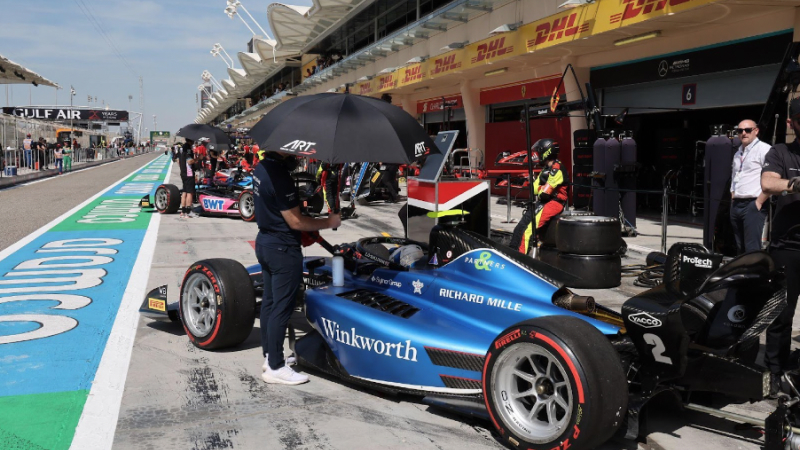
The F2 field will fully utilise Aramco’s lower-carbon synthetic fuel from 2027
At the limit
This F2 season comprises 14 rounds and 28 races, Qatar being a new venue for 2024. Michel says there’s plenty of demand for the championship to race as the F1 undercard in more countries – but it’s unlikely we’ll see F2 extend its calendar past 15 rounds as that would increase costs for teams. Michel says however that there’s demand for F2 to race at many more circuits than it currently does.
“We're bringing quite an extensive show in a race weekend for Formula 1 that, when we're not around, you can see it… there's quite a lot of requests for us to come [to different circuits].”
Michel maintains that the limit is hovering around 15 rounds for F2, while F3 is very unlikely to stretch beyond 10 rounds.
With the new car also come new complications. As the championship headed for Jeddah, there was one worry - the availability of spare parts. That was a worry echoed by some F2 team members.
The F2 CEO explained: “When you make a new chassis, [there are] always difficulties to make sure that you're going to be ready on time.
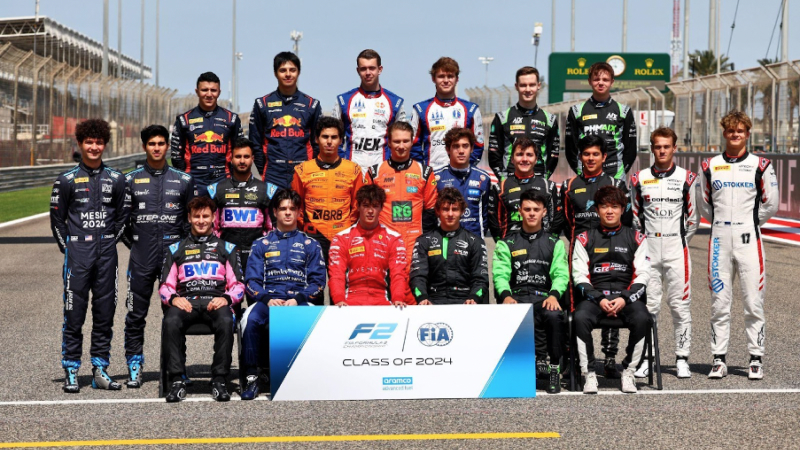
The 2024 F2 field includes 10 rookies who will race for the title across 14 rounds
“And it's a quite long process to put together a car because you need, number one, to develop it, and you need to have a development programme… it's not like Formula 1 where they [teams] have two cars [each] to make. And for next year it's going to be the same with F3 with 30 cars. So it's a little bit more tense.
“Of course we don't start the season with the same level of spare parts that we have on the regular season. But it doesn't stop us. We will be fine here in Jeddah, in Bahrain. We should be fine in Jeddah, so I'm not too worried.
“But for sure, it's a subject that we're looking at extremely carefully.”
A possible lack of spares didn’t change how the field approached the Bahrain F2 races, both of which Maloney won to lead the standings heading to the second round in Saudi Arabia.
With new hardware and a more focused set of objectives, we could see one of the most competitive F2 seasons yet – while the next generation becomes more prepared than ever for the challenges of F1.
